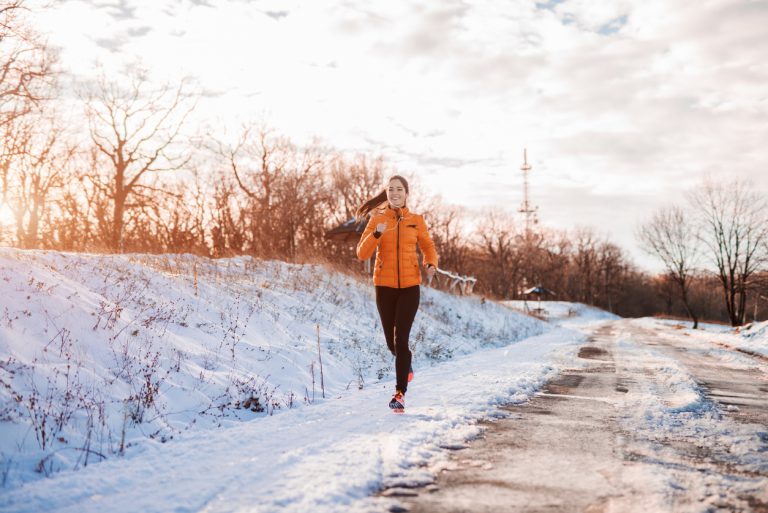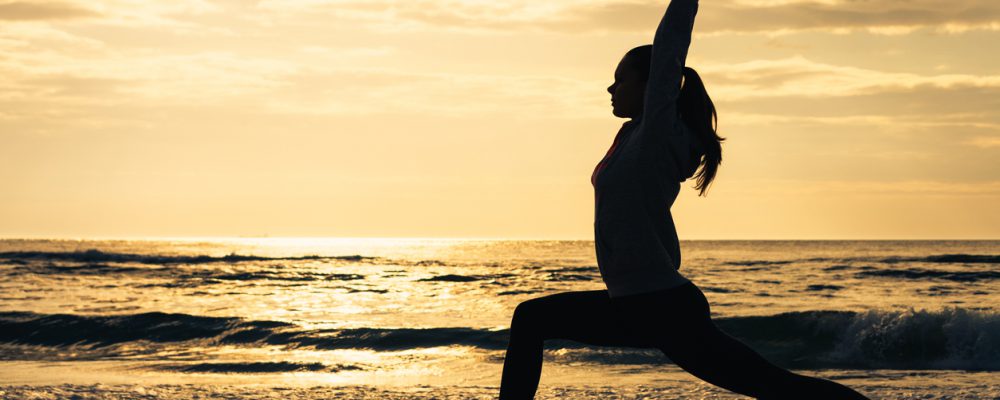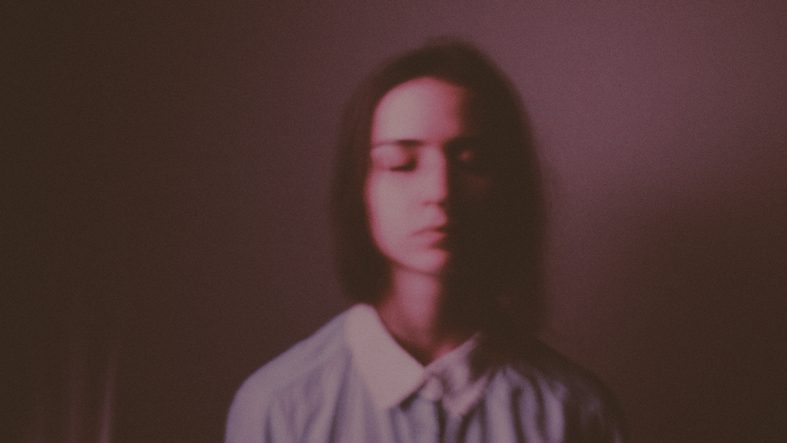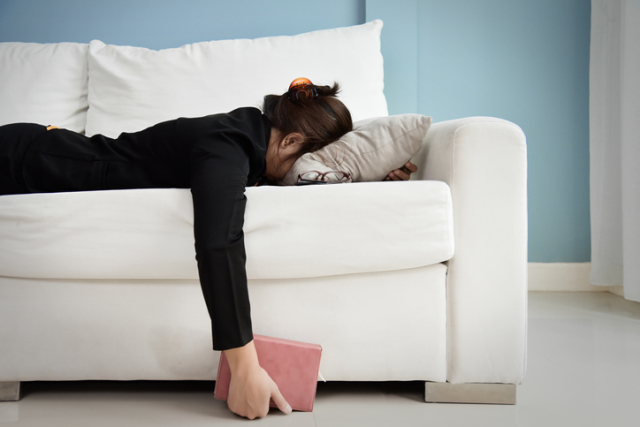When you exercise, you expect a few things: maybe to get sweaty, breathe hard, and feel “the burn”; and once you’re done, a nice boost of energy and endorphins feels great. A migraine shouldn’t be added to that list of things you feel when you exercise – but for many, it is.
If you get migraines when you exercise, popping pain relievers and lying in a dark room for relief is probably the last thing you want when pursuing a healthier lifestyle. So how do you get around it? Is exercise actually triggering your migraine attack, or is it just a “coincidence?”
We can answer that right away – no, it’s probably not a coincidence. But that still leaves some questions unanswered: how do you handle it, and why does it happen in the first place?
Since scientists are still trying to figure out what exactly is going on with migraines in general, it can be tough to answer – but there are some theories. And, exercise is often recommended as a part of your treatment plan – so what gives?
Seriously – it can feel like you’re caught in limbo. So, a good place to start understanding your exercise-triggered migraines (ETM) is by reviewing migraine triggers.
Migraine triggers
When most people have a migraine attack, they wind up in serious pain – that’s common. But what you’re experiencing is more than just a tension headache. Alongside throbbing (or not) pain, many sufferers experience nausea or vertigo, and sensitivity to lights or sounds – to the point where you may even vomit.
And as many as nearly one-third of migraineurs also experience an aura – wavy lines, sparkles, flashing lights, strobes, etc.
What’s going on there is still being investigated, but what is clear is the in-the-moment why of how attacks happen. It’s a single-worded concept: triggers.
Common triggers
Migraines simply do not come out of the blue – something has to trigger the attack. You’ve likely been educated on this when you were diagnosed, or have done some reading already. But to review, a trigger is a life factor that, when present, causes a migraine to happen.
According to a French study that took 385 migraineurs (migraine sufferers) and 313 non-migraineurs and had them keep a diary for 3 months, the most common triggers include:
- Fatigue
- Stress
- Some foods/drinks
- Weather changes
- Menstruation
- Infections
In fact, these triggers are the most common ones both in migraineurs and non-migraineurs – but, although not clearly understood yet, these factors precipitate migraines in migraineurs more frequently. Exact triggers vary from person-to-person, leaving it up to you to determine your specific triggers.
That said, according to the American Migraine Foundation, a single trigger – unless exceptionally dramatic – is not enough to start a migraine attack by itself. That means several usually have to be present simultaneously for a migraine to occur.
For example, many migraineurs cite weather changes as a cause of their migraines – i.e. storm fronts moving in, especially hot, humid, or cold days, etc. However, it’s hard to isolate that factor from other potentially-present triggers – like fatigue, stress, or that glass of red wine you drank the night the storm rolled in.
Following that same line of thought, the same could be said of exercise as a trigger. And if that’s the case, perhaps you can minimize other factors and move forward on your journey to greater health.
Can exercise trigger migraine?
But first, let’s go deeper into the discussion of exercise as a trigger. If you find yourself experiencing migraines when you exercise intensely – you’re not alone. One Dutch study found that 38% of 103 migraine patients had experienced a migraine within 48 hours of exercise.
This was regardless of their gender or migraine type (with aura or without aura), and, 56% of the migraineurs suffered their attacks during the exercise activity and discontinued it as a result – that’s a considerable impact and very discouraging to would-be healthy habit development.
Additionally, a Danish study using self-reporting methods found that migraines could be triggered by intense aerobic exercise in 4 out of 12 participants; and a Swedish test-retest study found that 57% of their participants suffered migraine attacks after the first test, and 21% suffered another attack after the retest.

These studies certainly suggest that for many migraineurs, exercise is a clear attack trigger – but again, remember that triggers rarely act alone. We could find no data within these studies that identified participants’ hydration level, the temperature, altitude, or recent eating and sleeping habits – so it is difficult to isolate the exercise from any other potential triggers that could have been in play for some or many individuals.
Lucy Rathier, PhD, a clinical associate professor in the Department of Psychiatry and Human Behavior at Warren Alpert Medical School, told WebMD, “There could be other variables at play that aren’t managed well… I treated a runner once who kept getting migraines because she wasn’t well hydrated.”
When the runner began drinking more water, she stopped getting migraines.
That said, if you presume that all other triggers were controlled, notice that the studies above all suggest intense exercise was used – typically hard cycling or running. This seems to indicate that this type of very intense exercise has effects in the body that may trigger migraine attacks.
But how?
Theories for exercise-triggered migraines
There are three main theories for why exercise sometimes triggers migraines:
- dysfunction of a certain hormone (neuropeptide hypocretin)
- production of lactate (an exercise-produced byproduct) during exercise
- a rise in the body’s level of CGRP (calcitonin gene-related peptide).
Neuropeptide hypocretin
Hypocretin is a neuropeptide – a hormone – that is produced by the part of your brain called the hypothalamus. It’s involved in the functions surrounding sleep and sexual arousal. In migraineurs, it’s theorized to be involved in some of the common warning signs that precur migraine attacks: sleepiness, food cravings, yawning, etc.
Many migraine sufferers report sleep halting a migraine attack, and altered sleep has been reported in triathletes who have overtrained – thus, intense exercise could by influencing the hypocretin pathway trigger migraine attacks in this way.
Lactate
When you exercise, your body has two different ways of generating energy to drive your muscles and functions: aerobic (with air) and anaerobic (without air). When you use primarily your anaerobic system – as in short, intense bursts of speed or movement, or heavy weight training – a byproduct is produced called lactate.
A 1996 study found that there were higher levels of brain lactate in migraineurs than non-migraineurs, suggesting a connection.
CGRP
Calcitonin gene-related peptide is a hormone that is found in high amounts in your nervous system. Blood samples from migraine patients show that the level of CGRP is especially high during migraine attacks. For this reason, CGRP is theorized to play an important part in causing or worsening migraine attacks.
What connects CGRP to exercise in particular, however, is that a study from 2006 found that it rises significantly during exercise – possibly in response to increased pain from muscle soreness. Given the peptide’s connection to both migraine and exercise, it’s possible that it’s a cause – although its role in relation to exercise-triggered migraine must be studied further.
But this is where things become complicated, because, as already mentioned, exercise can be a preventative or even acute treatment for migraine.
Can exercise cure migraine?
Regardless of your health issues, exercise provides nearly unnumbered benefits to you. Specifically for migraineurs, however, Timothy Houle, PhD, an associate professor at the Pain Mechanisms Lab of Wake Forest School of Medicine, says “Exercise is a potent stress reliever, and stress is commonly linked to migraine attacks.”
Plus, as you probably already know, exercise has a lot of other benefits, too, like:
- Weight loss;
- Prevention of heart disease, diabetes, and other chronic illness;
- Stronger bones;
- Improved quality of life.
And as a migraineur, you’ve probably been recommended exercise as part of your treatment plan. Why? Because it works – not as a cure, but as a part of your treatment.

There are a number of studies that support exercise’s role in improving migraine frequency and intensity:
- One of the most comprehensive and thorough studies was performed in 2003 by Narin et al. 40 women were randomly divided between a group that performed one hour of exercise three times a week and a control group that did not. After 8 weeks of this program, the exercising group experienced greatly reduced intensity, frequency, and duration of pain from their migraine attacks compared to the control group. This suggested that relatively long-term aerobic exercise reduced migraine symptoms. The hypothesized reason was that the improvement was a result of increased nitric oxide production in the exercising group.
- Another study of 30 women under similar conditions (one hour twice weekly aerobic exercise; 6 week duration) had results that were consistent with the first.
- As did a 2009 Swedish study; and a
- 2016 Iranian study.
In addition to clear reduction in frequency, intensity, and duration of migraine days per month, it’s interesting to note that most participants of these studies (up to 90%) self-reported improved quality of life following treatment with exercise.
In addition, a more recent (2018) study on 52 migraineurs followed a similar structure for three months, with follow up at the end of those months and then again 6 months later. Not only did the exercising group display a reduction of migraine days, pain intensity, and pain duration – but their quality of life remained higher at a later follow-up: participants spent on average 32% more time handling household chores, nearly 50% more time on work or study, 31% on social activities, and 33% more time with family.
It is also interesting to note that a study of 72 migraineurs (without aura) found that yoga was more effective than “self care” – although what self care is defined as was not clearly laid out.
On the other hand, there is very little evidence for anaerobic exercise (e.g. short sprints and weight-lifting) being effective for migraine.
How does exercise relieve migraine?
It’s a simple question, but the theorized answers are very involved. There are a number of hormones that are postulated to be lower in migraineurs than non-migraineurs; and when migraine sufferers exercise many of these hormones are increased.
For example, part of the theorized biological processes of migraine attacks concern blood vessels in the brain constricting. Nitric oxide, as mentioned in a study above, vasodilates – expands – blood vessels. Exercise improves the muscular tone of your blood vessels and has been linked to increased nitric oxide levels. In that fashion, it appears to aid in treatment of migraine.
Consistent aerobic exercise also improves sleep, weight, mood, and heart and lung function, which may also improve migraine indirectly by reducing certain inflammation molecules in your brain and increasing the anti-inflammation molecules, as well.
How to prevent migraine during exercise
So – exercise can be a trigger for some, even when it’s the only trigger present. Conversely, exercise can help reduce frequency, duration, and intensity of migraine attacks. But it’s a chicken-and-egg situation – how do you exercise now without getting an ETM, so that you can get the benefits of exercise later?
Imagine for a moment that you engage in an exercise program and begin your very first workout. Things are going well, you’re starting to feel the endorphins. But then, during the workout or after, you get a migraine attack and stop.
You do what’s necessary to recuperate, and if you’re motivated you try again; but if you get another migraine, anxiety about getting an exercise migraine begins to build and you start skipping workouts…
Which leads you to being less physically active…
Which leads to worsening migraine frequency and severity…
Which further reduces your ability to exercise….
It can easily become a vicious cycle – but thankfully, the American Migraine Foundation offers a very simple plan to follow so you can go the distance.
Hydrate
Firstly, if you’re going to be engaging in a proven migraine trigger, control other ones as best you can. Dehydration is common and, as Rathier pointed out earlier, may in fact be the cause of your exercise-triggered migraines.
So hydrate with water before, during, and after exercise. The National Academies of Science, Engineering, and Medicine suggest that non-exercising individuals drink 2.7 liters of water per day (women) or 3.7L per day (men).
But since you’ll be exercising, plan for more. Prevent your mouth from going dry while you exercise. I: if you’re thirsty, that’s a good indicator to drink – and if you find yourself still getting migraines, then try to drink enough so that you don’t get thirsty. If you aren’t sweating at all while exercising moderately-to-vigorously, that’s another sign that you’re dehydrated – so drink.
Pre-eat
The American Migraine Foundation also suggests that you eat a snack about 1.5 hours prior to exercising, since exercising reduces your blood sugar – your body’s energy. Focus on foods high in protein, but avoid any that you’ve identified as triggers.
For example, processed foods are common culprits, as is aged cheese, anything with nitrates or nitrites in them, and nuts. But again – trigger foods are very particular to the individual, so try to determine your own.
And if you find yourself getting cramps during your workout, you may have eaten too close to exercising – so adjust when you eat or wait longer before working out.
Warm up
Always warm up before exercising. If you plan on engaging in aerobic exercise, like walking, jogging, or cycling, start with a slow, easy pace for at least 5 minutes before engaging in higher levels of intensity.
If planning on lifting weights or other resistance training, consider walking for 5 minutes, stretching, and/or lifting lighter weights before moving onto heavier resistance.
Regardless, aim for about 15 minutes to warm up, and 5 minutes of slower-paced walking or otherwise to cool-down after your workout.
Keep the balance
Although cardiovascular (aerobic) exercise provides the most clear evidence for migraine improvement, ideally you’ll also include elements of strength training and flexibility training, as well. This ensures that you develop your bodily health in a balanced fashion.
For reference, cardiovascular exercises include:
- Brisk walking
- Jogging
- Running
- Sprinting
- Swimming
- Cycling
- Rowing
- Jumping rope
- Cross country skiing
Resistance training includes:
- Bodyweight calisthenics
- Free weight lifting
- Weight machines
And flexibility training includes:
- Stretching exercises
- Yoga
- Pilates
Other things to consider
In addition to hydrating, eating, and warming up, pay attention to other potential triggers. For instance, the weather can trigger a migraine, particularly if it’s excessively warm, humid, or sunny; or there has been a sudden weather change to hot or cold weather.
If that is the case, consider exercising indoors in a climate-controlled environment (like a gym); or, exercise in the morning or evening hours when it is cooler out.
In addition, altitude can play a role. If you’ve recently moved to or are visiting a higher altitude location, wait two days or more for your body to adapt before engaging in exercise.
Wrapping up
Exercise-triggered migraines don’t have to mean a life of sedentary misery for you – especially when exercise can in fact greatly improve the quality of your life as you learn to manage migraine.
Stop your migraine before it starts so you can get out and enjoy exercise and life – or reduce your pain and keep moving forward to greater health.




